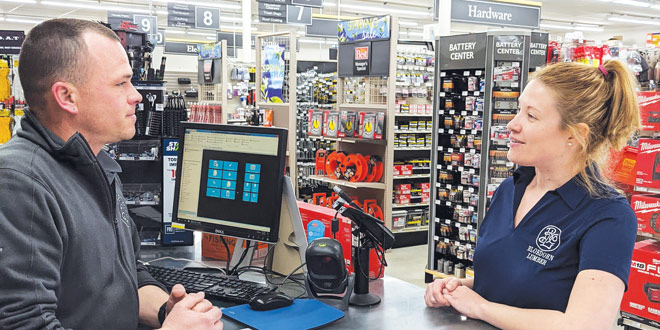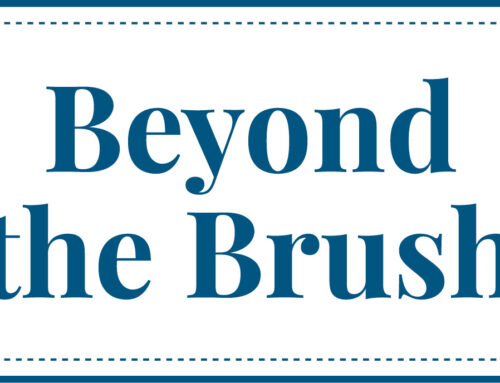If you’re like many managers, you may suffer from feedback phobia. It’s easy to tell employees “nice job” when they do something right, but it’s harder to ask them to fix something they’re doing wrong. Put off that conversation too long and a poorly performing employee does damage to the rest of the company or becomes disengaged because they don’t feel adequately equipped for the job.
Giving regular feedback, whether recognizing an achievement or offering suggestions for improvement, should become part of your management strategy because it’s essential to the well-being of your business. Paint & Decorating Retailer identified some best practices to follow after talking to two retailers who have created a rich culture of giving and receiving feedback in their own organizations, and Amy Sandler and Kim Scott from executive education company Radical Candor.
Start With Honesty and Empathy
The culture at Bloedorn Lumber is rooted in relationships, which creates an open door for honest discussions. The company has come a long way from its humble beginnings in 1919 as a simple country lumberyard in Torrington, Wyoming. Today the operation spans four states with 22 retail stores, three truss manufacturing plants and a door shop, all employing more than 400 people. What hasn’t changed, however, is the family-style culture passed down through the generations.
Lindsey Maybee, who grew up watching her dad manage one of the Bloedorn locations, helped build the company’s human resources department and is now the director of HR, safety and training. As she trains store managers, she says their culture is built on establishing an openness to giving and receiving feedback.
“There is a family environment in each of our locations,” she says. “Managers care about their employees, they know what’s going on in their lives and they genuinely care for their well-being.”
When mentoring a new manager, Maybee encourages them to know the important things about their employees, such as their family dynamic or if they’re struggling with something in their personal lives. There should be constant communication so managers know what is going on with their employees.
“Be human, live by the golden rule,” she says. “You may need to be tough and address a problem, but always have empathy and understand the hardships they may be dealing with.”
When they understand the unique story of each employee, managers can be more empathetic when something goes wrong. Is the employee performing poorly because of a difficult circumstance in their own life? Showing empathy will make it easier to receive a difficult conversation.
Empathy and candid perspective-sharing are foundational to the way Sandler coaches managers to give more effective feedback. Practicing Radical Candor builds on two principles: caring personally and challenging directly, as outlined in Scott’s best-selling book “Radical Candor: Be a Kick-Ass Boss Without Losing Your Humanity.” Caring personally helps you build trusting relationships by demonstrating you have the other person’s best interests in mind. Challenging directly means being willing to have tough conversations with team members to push them to improve, which also shows you care about them. When following these principles, feedback becomes a conversation built on a trusting relationship. It’s guidance rather than a top-down directive.
“Radically candid feedback is sharing your perspective in a way that is helpful and humble, because you might be wrong,” Sandler says. “Radically candid conversations are two-way, back-and-forth conversations. You are sharing your view of the situation and inviting the other person to share their perspective: ‘Here’s how I see it, how do you see it?’”
Make a Habit of Giving Feedback
Offering feedback to employees should happen more than just once a year during a formal performance evaluation. It’s important to address concerns whenever they arise, daily if necessary. But it’s best to have a scheduled time so the opportunity to give feedback doesn’t get missed.
At Spectrum Paint, weekly check-ins, combined with more formal midyear and annual reviews, offer a structured way to ensure managers and employees stay in constant contact.
“If you’re going to be successful at providing employees with meaningful feedback, you need to put it on the calendar and have an agenda for what you’re going to talk about,” says Nick Blunt, vice president of store operations, Midwest division.
Spectrum Paint is an entrepreneur success story. Travis Detter, company founder, started selling paint out of a storage shed and has since grown the company to 92 stores in nine states. Blunt oversees regional managers who collectively supervise more than half of the company’s nearly 600 employees.
A few years ago, Detter brought in an author and consultant for management training, which has helped form the company’s current management strategy.
“The consultant helped us boil our management strategy down to a simple formula that was easy to implement,” Blunt says.
For managers who report directly to him, Blunt meets with them every two weeks about what’s happened since their last meeting and then sets goals for the next two weeks. Those biweekly reviews set them up for the midyear and annual reviews, making it easier to identify accomplishments and challenges.
While the regular schedule of reviews may seem like a time commitment for a busy retailer, that time is an important investment into your company, says Blunt.
“People are the driving force behind our businesses, and we have to always be investing in our people. When we’re constantly giving feedback, we’re able to realign,” he says. “We’re constantly getting better and not waiting weeks or months before we correct problems.”
Managers Should Lead by Example
When laying the groundwork for a culture of feedback, make sure all employees, regardless of their position in the company, are open to receiving congratulations or criticisms. Let frontline employees know it’s OK to approach management with suggestions or issues.
In fact, encourage managers to ask for feedback and start the conversation.
“Employees may sometimes be afraid to take a manager’s time with a question or concern, but encourage them that it’s OK to speak up. Remind managers to take the time to listen and remember that feedback is a two-way street,” Maybee says.
Managers should get in the habit of receiving feedback because it will not only help them develop as leaders, but it will also show employees that no one is beyond the need for improvement.
“When it comes to giving feedback, especially criticism, it’s important to show that we can take it before we start dishing it out, especially if we’re managers. We need to lay our power down,” Sandler says. “One way we do this is by actively asking for feedback and following up on it when we receive it. It might never feel 100% safe or comfortable or risk-free to give feedback to others, especially to our boss. So it’s up to managers to create an environment where the rewards of providing feedback outweigh the risks.”
A great way to start, she says, is by sharing personal stories of a time when you received critical feedback that helped you improve something in your life.
Hearing a personal story will mean more to employees than an abstract theory about why feedback is important. Stories are more likely to open up a conversation where employees and managers can understand each other, rather than just respond to each other’s actions.
Focus on Growth
The end goal of delivering feedback is personal and professional growth.
“Criticism that’s kind and clear and praise that is specific and sincere reinforces good work and behavior,” Sandler says. “You can think of praise as putting your foot on the accelerator and criticism like putting your foot on the brake; challenging people to do more of what’s good so they can build on their success and helping others learn from it, and do less of what’s not working well. It shows you care because it shows you are noticing and that you want to help the person and the team achieve their goals.”
At Spectrum Paint, all employees have access to ongoing training and development in all areas of the store. Everyone has a chance of moving up through the company.
“Cross-training is a very important part of our culture,” Blunt says. “It goes back to the story of our founder who wore all the hats as he was getting the business off the ground. We have a hands-on attitude where management is willing to get in the trenches to help get the job done. That attitude goes along with a culture of constant development where we are always trying to make ourselves better.”
Regular feedback, then, becomes a critical part of training and development. Even after employees finish their formal training, every day brings a learning opportunity, and learning happens when managers correct and reward.
“We’ve tried to instill the idea in our team that feedback is a gift,” says Blunt. “Nobody’s trying to bruise your ego; we’re trying to make you better.”
Evaluation Form
If you need help creating a form for an annual employee review, NHPA has a template to get you started here.







